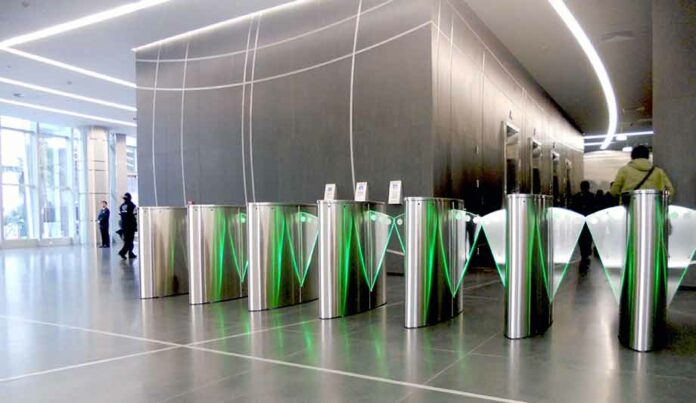Protected with high-definition surveillance cameras and a variety of credential readers, Gate access control systems ensure safety in your gated area. A gate access control system can not only keep away potential criminals, but it may also make gate entry easier for residents, and property managers.
By utilising the most up-to-date access control technology, slide and swing gate access control systems improve corporate efficiency by allowing peoples entry safely. Remove the old lock and key in favour of sophisticated solutions that don’t obstruct authorised users from entering the gate.
Tripod turnstile, a popular gate access control mechanism is substantially slower than speed gates, yet they may be easily jumped over. They can, however, be used in conjunction with a keycard reader or a key fob to assist limit access by only allowing persons with validated credentials to pass through.
Full-height rotor turnstiles are far more secure than this, they can’t be hopped over. Mandaps are comparable to it.
These are simple to set up and can be used with mobile phones, keypads, biometrics, or key cards. Its introduction is due to because the current security control system’s critical problem. In general, an access control system is a security technology that restricts access and determines who can enter a region.
Security is one of the most important concerns for businesses, whether they are tiny businesses or major corporations. Furthermore, for residential areas, security is a must-have feature. Access control systems are becoming increasingly popular for this purpose, as they are capable of effectively regulating and controlling every entry and leave.
It is, for example, particularly successful at managing and monitoring employee movements at work, and it is frequently used as an office security system and a home security solution. In most cases, the authentication device is a keypad that acts as an interface for users to obtain authentication for accessing restricted areas.
Entities that can conduct actions on the system are termed subjects in any access-control paradigm, and the entities that represent resources to which access may need to be regulated are called objects.
Subjects and objects should both be thought of as software entities rather than human users because human users can only affect the system through the software entities they manage.
Although some systems equate subjects with user IDs, granting the same amount of permission to all processes initiated by a user by default, this level of control is insufficient to satisfy the principle of least privilege, and is arguably to blame for the proliferation of malware in such systems.
Follow and connect with us on Facebook, LinkedIn & Twitter

